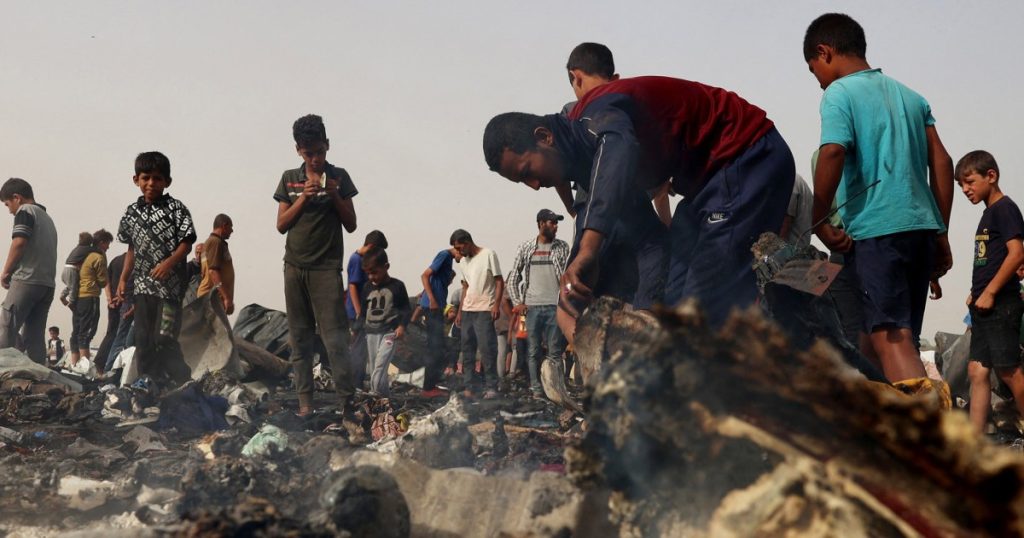A deadly airstrike in Rafah’s Tal al-Sultan neighborhood destroyed a tent camp where displaced civilians were sheltering, killing dozens of innocent people, including children. The Israeli Defense Forces initially claimed to have targeted two senior Hamas leaders but a fuel tank likely caused an explosion that spread through the camp. Israeli Prime Minister Benjamin Netanyahu called the incident tragic and said it was under investigation. The attack came shortly after Hamas launched a missile barrage at Tel Aviv, leading to increased isolation for Israel and its ally, the United States, on the world stage. The United Nations Security Council was set to hold an emergency meeting, and a trio of European countries planned to recognize an independent Palestinian state.
Following the deadly strike, images emerged showing the devastation in Rafah, with Palestinians running for safety and trying to assist the injured. The National Security Council spokesperson described the images as heartbreaking and emphasized Israel’s responsibility to protect civilians in the ongoing conflict that has already resulted in over 35,000 deaths in Gaza. Israel launched its offensive in response to Hamas attacks in October, leading to escalating tensions. The U.S. stressed the need for Israel to take precautions to avoid civilian casualties and was in discussions with the IDF to understand the circumstances of the airstrike.
President Joe Biden had warned that the U.S. would suspend arms shipments to Israel if a full-scale assault on Rafah were launched, crossing a red line for Washington. In the aftermath of the deadly strike, some Palestinians in Rafah began fleeing the area, seeking safety further north in Gaza. Abou Tarek Elkaferna, a displaced man, stated that his family had faced multiple displacements during the ongoing offensive and had been under shelling on Sunday night. They decided to leave Rafah for Deir al-Balah but expressed uncertainty about reaching safety until the war ended. The strike had left them feeling like they were starting over again from square one.
The attack in Rafah occurred shortly after the International Court of Justice ordered Israel to halt its offensive in the region due to the immediate risk posed to Palestinians. The United Nations Security Council convened an emergency meeting to address the situation, and European countries announced their intention to recognize an independent Palestinian state. The incident fueled global condemnation of Israel and its actions in Gaza, with demands for accountability and protection of civilians. The destruction of the tent camp and the loss of so many innocent lives drew attention to the devastating impact of the conflict on the local population and the urgent need for a resolution to the violence.
The airstrike caused widespread devastation in the tent camp in Rafah, with many innocent people, including children, losing their lives. Israel’s initial claim of targeting Hamas leaders was overshadowed by the resulting tragedy, prompting calls for accountability and protection of civilians. The U.S. government urged Israel to take precautions to avoid similar incidents in the future and emphasized the need to prevent civilian casualties. The deadly strike further escalated tensions in the region, leading to increased isolation for Israel and highlighting the urgent need for a resolution to the ongoing conflict. The impact of the airstrike on the residents of Rafah underscored the human cost of the violence and the need for international intervention to address the situation.


